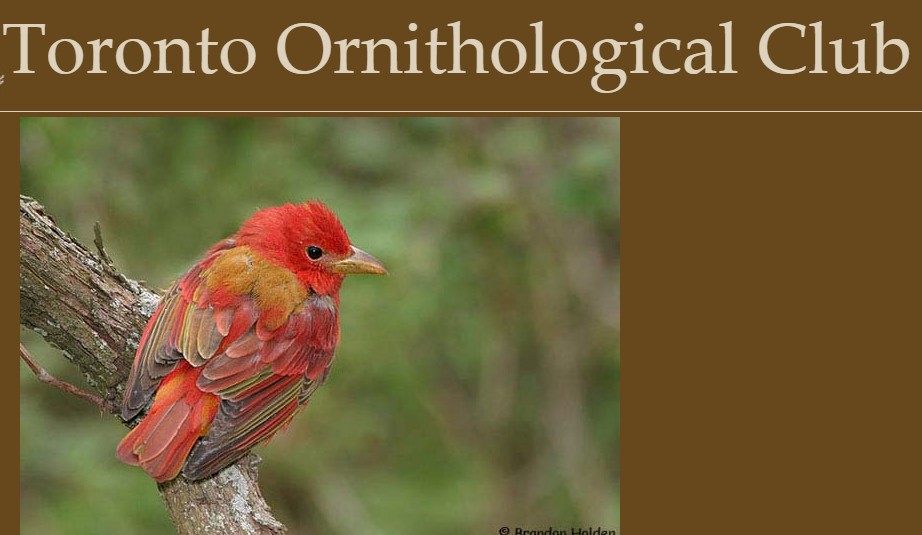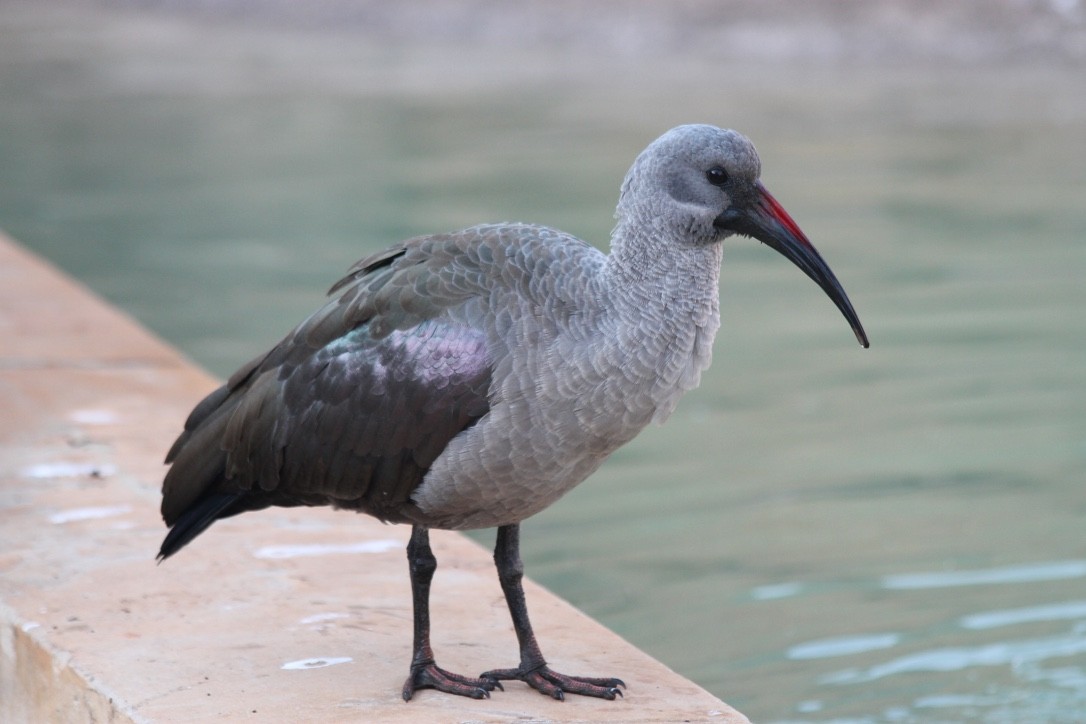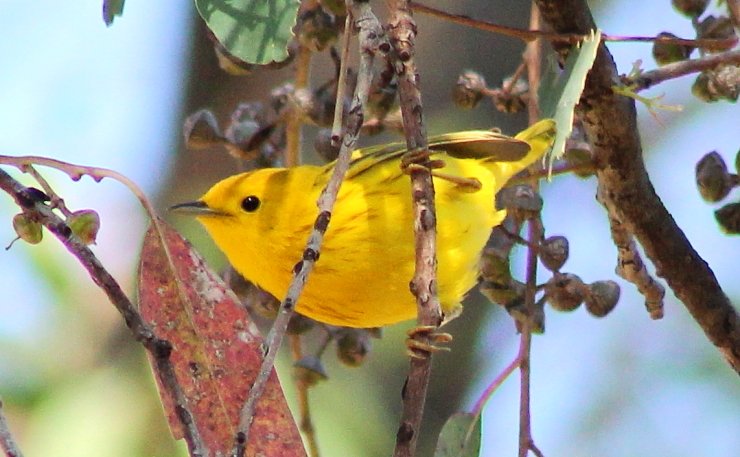PROTECT YOUR DNA WITH QUANTUM TECHNOLOGY
Orgo-Life the new way to the future Advertising by AdpathwayThe myriad threats to different bird species across North America and the globe can feel daunting at times, so it’s important to celebrate victories as they come in the world of conservation, and after many decades of hard work one iconic bird has been saved from extinction. The Whooping Crane population reached its lowest recorded number in 1941, when only 14 adults were recorded along the Texas coast. Since then, there’s been a gradual increase in the number of birds as a result of concerted conservation efforts. At their sole Wintering habitat at the Aransas National Wildlife Refuge in Texas, an estimated 557 of these birds were recorded for the 2025-2025 season, with the rate of population growth thought to be holding at around 4.33%. More birds were also spotted expanding outside of the usual range of the survey area.
Although the survey was conducted in Aransas, the work to bring these birds back from the brink has come through the dedication of organisations and individuals across the U.S. and into Canada. The Whooping Crane’s migratory route passes up and down the North American Central Flyway, passing through Texas, the Great Plains, the Canadian Prairies, and into Canada’s Northern Boreal Forest. As a result, funding for the U.S. Fish & Wildlife Service’s International Recovery Plan for the bird has also come from the Canadian Wildlife Service and the Guadalupe-Blanco River Authority.
The species still has a long way to go before it can be delisted as an endangered species, but this is very promising progress!
 Whooping cranes at Aransas National Wildlife Refuge in Texas, by Diane Nunley
Whooping cranes at Aransas National Wildlife Refuge in Texas, by Diane NunleyWhooping Crane species info
As you might expect, the Whooping Crane gets its name from its distinctive ‘whooping’ calls. The species has the accolade of being the tallest North American bird, with males approaching up to a whopping 1.5m in size when standing fully upright – that’s 5ft – as tall as a lot of humans! Male birds are typically larger than females in both height and weight. In terms of weight, the males average around 7.3kg/16lbs and females around 6.4kg/14lbs.
Besides the size difference, there’s little to distinguish males from females visually. Both primarily have white plumage with ‘black primaries, black or grayish alula…sparse black bristly feathers on the carmine crown and malar region…and a dark gray-black wedge-shaped patch on the nape’. Juveniles have a red-cinnamon coloration to their feathers. In terms of their calls, the males and females can be distinguished between their different ‘guard call’ and ‘unison call’ vocalizations (with the latter also having some differing visual elements).
The Whooping Cranes are known to have a remarkably long lifespan, with a maximum age in the wild estimated to be around 30 years, although most birds will not reach this.
The diet of these omnivorous birds is very varied and changes based on the season, but includes larvae, insects, frogs, rodents, small birds, fish, crayfish, blue crabs, clams, plant tubers, wolfberries, and other berries.
The Whooping Crane has a low birth rate, typically only rearing a single offspring per year, which are subject to the risk of infant mortality. The bi-annual migration the birds undertake also makes it more difficult to produce and raise young. This has made the population size of this species particularly vulnerable to the threats against it.
Sources: U.S. Fish & Wildlife Service report ‘Whooping Crane Survey Results: Winter 2024–2025’, https://www.uvm.edu/~dstratto/bcor102/readings/01_Exponential_growth2020.pdf
 Photo By Klaus Nigge via USFWS
Photo By Klaus Nigge via USFWSThreats and conservation efforts
The primary threats to the Whooping Crane population historically were the expansion of human settlements and hunting. ‘There were approximately 1500 Whooping cranes in the US in the mid 1800s, and the population may have been as high as 10,000 prior to European settlement.’ (source).
There has been an enormous amount of habitat loss for these birds from human settlement and agricultural expansion. Historically, the cranes were present across the Northern Great Plains, but as this became converted to farmland, their population dwindled to the single population we know of now. Specifically, the turning of prairie wetlands into fenced-off, drained, grain-producing fields, plus diversions of major river systems like the Platte River had enormous impacts, completely removing the crane’s breeding grounds. The efforts to maintain the Aransas National Wildlife Refuge for the birds have therefore been vital.
Continuing threats to the birds come from powerlines (at least 44 recorded deaths since 1956) and fences (particularly electrified rural fences). Any developments that could affect freshwater inflows (such as the building of reservoirs, diversions for agriculture, etc.) are another concern: changes to inflows could affect the salinity levels of the estuary wetlands, and thereby have a detrimental effect upon the food sources for the cranes, not to mention fresh drinking water.
Besides the above, the vast majority of ‘documented’ mortalities between 1870 and 1930 were from shooting, which amounted to 274 birds, either for hunting trophies, food, or occasionally, for museum collections. Shooting was particularly prevalent during the migratory period. Although the Migratory Bird Treaty Act of 1918 made it illegal to shoot Whooping Cranes in the U.S. many more were shot after this point, although conservation efforts, public awareness campaigns, and the introduction of the Endangered Species Act in 1973 in the U.S. (plus the same in Canada in 1978 by the Committee on the Status of Endangered Wildlife) helped to reduce it substantially. Today, illegal shooting occasionally still occurs, though it’s a much lower threat to the continuing survival of the species. Ultimately, though the small population size of the Whooping Crane means the loss of any bird from shooting is a significant setback.
 Photo by Joe Ferrer/Shutterstock
Photo by Joe Ferrer/ShutterstockThe future of this species
Although the partial rebounding of the Whooping Crane population is definitely a victory we should cherish, it’s important not to get complacent. Various threats towards these birds are likely to become more pronounced in the future.
Given the extremely low historic population size, it is estimated that the present population is descended from just 6-8 founding individuals, meaning it has a particularly limited gene pool (with an estimated loss of ‘66% of all genetic material’ according to Mirande et al. 1993 and Glenn et al. 1999). This could mean issues going forward of an even lower rate of successful reproduction with viable offspring, as well as susceptibility to various other defects.
Additionally, as human settlements continue to expand across the coast of Texas, so increases the likelihood of these birds coming into contact with human beings and the various threats this poses. The threat of chemical/oil spills is ever present given the proximity of the Aransas National Wildlife Refuge to the Gulf Intracoastal Waterway; given the reliance of the natural migratory population on this single site, one spill or leak which could poison or kill off the bird’s food supply, or just directly poison the birds themselves, could have a devastating effect.
To truly create resilience in the Whooping Crane population, it’s likely that additional wintering habitats need to be created, so that their reliance upon Aransas is not absolute. A reintroduction program has created a non-migratory flock at the Chassahowitzka National Wildlife Refuge in Florida, however we need to look at creating suitable wetland areas for the natural migratory population.
 Photo by Christopher Ciccone
Photo by Christopher Ciccone






















 English (US) ·
English (US) ·  French (CA) ·
French (CA) ·